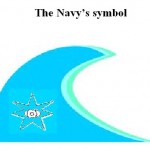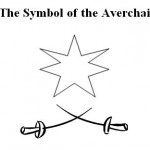The legions of Sangrithar were the mightiest armed force on the face of the world for thousands of years, during most of which they kept the world (or at least the western half of Fanar) safe from Dark Ones, barbarians and would be conquerors. After the Curse took hold, they became a force to be feared, an iron arm of the mad tyrant sitting on the Pearl Throne.
The legions recruited from young men and women (mostly men, but the legions were an equal opportunity employer) in their mid to late teens from every corner of the empire. The pay was good and the glory was better. Until the Curse, the legions had their pick of the litter, but as the legions’ reputation went south, there weren’t quite as many volunteers and those who did sign up were cut from a rougher cloth. If the legions were too thin, the recruiters turned up the charm and/or veiled threats, whatever it took to reach the quotas.
The legion command structure is listed below. The unit sizes and spans of control are accurate for times of peace and during war, conscription could double or triple the size of the army, though at bigger numbers the command structure did start breaking down.
| Unit Name | Unit Size | Unit Leader |
| Squad | 10 legionnaires | Deputy Warden |
| Platoon | 100 legionnaires | Warden |
| Legion | 500 legionnaires | Master Warden |
| Regiment | 2000 legionnaires | Helm Warden |
| Division | 8000 legionnaires | High Warden |
| Army | 32,000 legionnaires | Lord Warden |
There were exceptions to the typical spans of command. Master Warden Jafal Ordalli, for example, commanded four legions during the initial attack on Cormane, and Kaphiri held the rank of Master Warden even though no squads reported to him. At any given time, there was one Lord Warden (the next in line from House Halvyl), four High Wardens, and a varying number of officers at other ranks. Deputy Warden was the lowest officer rank, and was comprised of legionnaires promoted from the battlefield (Sangrar’s equivalent to NCOs), and the sons of daddies with deep pockets. Officers earned promotions based on both merit and need, and the Lord Warden’s approval was required for any proposed promotion to the rank of Helm Warden or higher.
The commander-in-chief of the legions was the God-Emperor, but like your president, when the legions went to war, he stayed in Gloryngael, his version of the White House. The Lord Warden, his five-star general, issued orders in the his name.
The position of Lord Warden was created by Ataryl the First, who made his younger son Halvyl Lord Warden at the same time he declared Ardwynn, the elder son, his heir. Ataryl thought it safest to divvy up control of the state and military. He trusted himself completely, but worried that his heirs might not have his fortitude. That’s the kind of thinking you often get from someone powerful enough to rule for a thousand years. Modesty was not one of his virtues.
As it turns out, his worry was more theoretical than practical, at least for the first few generations . Ataryl lived so long, that the first of his family to succeed him on the throne was his great-great-great-grandson, Gwyndal. Ataryl outlived all the others.
Your Prince Charles wouldn’t have been happy at all to have found himself in Ardwynn’s shoes. Compared to Ataryl, Queen Elizabeth will be a young whippersnapper when she finally gives up the ghost. When Gwyndal took the throne, Harrylcar was Lord Warden, fifth after Halvyl to hold the title, and Gwyndal was glad to have him at his side. Ataryl had not left things to chance though, he had placed a compulsion upon the Lord Warden to act in the people’s best interest.
During the centuries of benevelent God-Emperor rule, the Lord Warden was a hero to all Sangritharians, from those living in the capitol to those in the farthest reaches of the empire. The Lord Warden did whatever the God-Emperor commanded and was never in conflict with Ataryl’s compulsion. In time, the original intent of the compulsion was forgotten and the Lord Wardens started serving the God-Emperor, not the people, not that there was much difference between the two back then.
That all changed after Arvyl’s Folly. That’s when the curse took hold of the God-Emperor. Beginning with Tormyn Blackheart, the commands of the Pearl Throne strayed from the path of human decency and the Lord Wardens, unable to resist the twisted compulsion, were his arm of enforcement. By Hali’s time, after seven centuries of burning, looting and plundering, the Lord Warden and his legions were villified outside of the capitol.
Inside the capitol, the Lord Warden was still a hero. The people of the capitol knew that the Lord Warden, and the Vizier, were all that protected them from the worst of the God-Emperor’s tantrums, and they loved him for it. Whenever flags waved bearing the Lord Warden’s symbol, a mailed fist holding a scepter topped with Sangrithar’s seven-pointed star, they cheered.
The legions were divided into four divisions:
Infantry – these spearman used shields, spears and swords and wore chainmail. There were also a few platoons of archers. High Warden Avery Tavistern commanded the infantry in Hali’s time. The infantry’s symbol was a diagonal trident flanked by the star of Sangrithar and a conch shell. In ancient times, infantrymen used tridents, but spears were easier to use and cheaper to make and replaced the three-pronged fork as the legions grew larger.
Cavalry – these riders wore chainmail or leather armor, and carried swords, bows and lances. Cantalor Fagan was Horsemaster under Hali and the symbol of the cavalry was a horse rearing beneath the star of Sangrithar.
Navy – the God-Emperor’s fleet, the largest in the world, was as feared on the seas as the legions were on land. At the end of the era, the flagship Foambreaker, sailed under the command of Admiral Ivrael Landalla (I always thought his name sounded more like a landlubber’s than a sailor’s, but names can be deceiving). The navy’s symbol was the star of Sangrithar in the center of a towering wave.
Averchai – the God-Emperor’s elite guard, the Averchai supplemented the legions on campaign, policed the capitol and provided protection for the God Reborn. They wore chainmail and wielded swords or maces, typically with shields. The last Averchai High Warden was Daerycil Belsor, a bearish brute of a man. The symbol of the Averchai was two crossed swords beneath the star of Sangrithar






